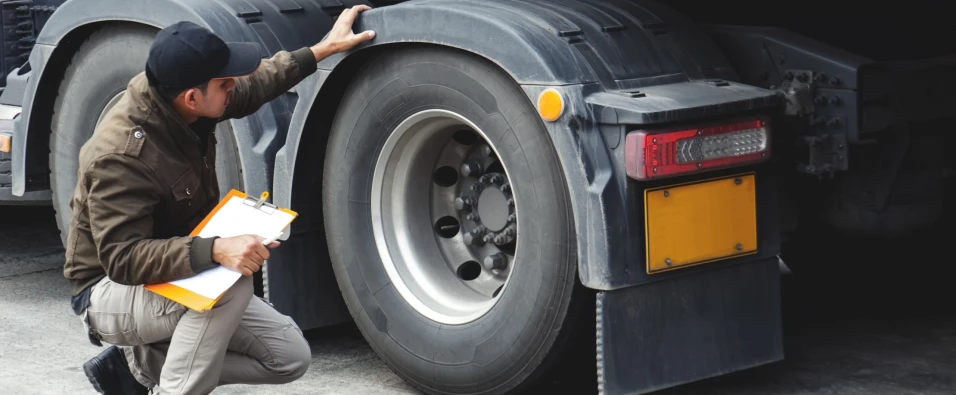Truck Driving Jobs for Owner-Operators
Truck drivers may face mechanical failures of their vehicles, especially with older trucks, due to wear and tear on essential components. Even minor issues can become expensive repairs without a strong truck maintenance program.
Company-hired truck drivers and owner-operators must follow a preventive maintenance checklist to avoid costly breakdowns and unplanned downtime.

One of the most common issues is engine and transmission problems. Regular oil changes and checking fluid levels can prevent breakdowns. Leaks should be fixed immediately to avoid damage to the engine and transmission mounts. Ignoring fluid levels can lead to overheating and serious engine damage.
Another major concern is the braking system. Soft brakes, worn brake pads, and faulty slack adjusters can cause accidents. Every truck maintenance schedule and inspection should include regular inspections of brake lights, braking components, and other issues.
Tires also require close attention. Tire blowouts often happen due to low air pressure, uneven wear, or low tread depth. Well-maintained tires improve fuel efficiency and lower fuel consumption.
This is also essential for your truck’s legal compliance. Low tread depth can lead to fines and other legal penalties. In addition, this year’s International Roadcheck will focus on truck tires. Thus, you should take an additional time to ensure your vehicle’s tires are in proper condition.
Read our material about the International Roadcheck 2025 to ensure you’re fully prepared and avoid any legal issues.
Tips for Longer Truck Life
Keeping a truck on the road for as long as possible requires dedication to truck maintenance, safe driving habits, and using quality parts. Truck drivers who follow a strong maintenance program can prevent breakdowns, lower repair expenses, and extend the lifespan of trucks.
A well-maintained truck not only operates more efficiently. This also ensures safety on the road. Proper fleet maintenance reduces downtime, improves fuel efficiency, and helps avoid expensive repairs.
Regular Maintenance
Following a preventive maintenance checklist is the best way to avoid expensive repairs and keep your truck functioning properly. A good maintenance schedule ensures all inspections and repairs are performed at the right time, reducing the risk of major failures. Some trucking companies and fleet managers enforce routine maintenance schedules to help keep their entire fleet in top condition.
Key truck maintenance activities include:
- Oil changes are crucial, as fresh engine oil reduces friction, prevents overheating, and ensures long and stable engine function. Neglecting oil changes can result in sludge buildup, reduced efficiency, and expensive repairs.
- Fluid checks. Low or dirty fluids can cause severe damage. You should monitor transmission fluid, brake fluid, power steering fluid, and coolant to ensure systems are working properly. Regular changes prevent fluid leaks and keep components running efficiently.
- Brake inspections. Brake problems can be dangerous and costly. Inspect brake pads, slack adjusters, and lights to ensure safe stopping power.
- Tire maintenance. Proper tire pressure and tread depth are essential for safety and fuel efficiency. Underinflated or worn tires can lead to tire blowouts, reduced handling, and increased fuel costs.
- The truck’s electrical system. A faulty electrical system can cause turn signals, brake lights, and auxiliary systems issues. Keeping these components in check ensures compliance with road safety regulations.
Following a preventive maintenance checklist like this, truck drivers can avoid downtime, reduce maintenance costs, and improve truck reliability.

Choosing Quality Replacement Parts
Keeping a truck on the road for as long as possible requires dedication to truck maintenance, safe driving habits, and using quality parts. Truck drivers who follow a strong maintenance program can prevent breakdowns, lower repair expenses, and extend the lifespan of trucks.
A well-maintained truck not only operates more efficiently. This also ensures safety on the road. Proper fleet maintenance reduces downtime, improves fuel efficiency, and helps avoid expensive repairs.
Regular Maintenance
Following a preventive maintenance checklist is the best way to avoid expensive repairs and keep your truck functioning properly. A good maintenance schedule ensures all inspections and repairs are performed at the right time, reducing the risk of major failures. Some trucking companies and fleet managers enforce routine maintenance schedules to help keep their entire fleet in top condition.
Key truck maintenance activities include:
- Oil changes are crucial, as fresh engine oil reduces friction, prevents overheating, and ensures long and stable engine function. Neglecting oil changes can result in sludge buildup, reduced efficiency, and expensive repairs.
- Oil changes are crucial, as fresh engine oil reduces friction, prevents overheating, and ensures long and stable engine function. Neglecting oil changes can result in sludge buildup, reduced efficiency, and expensive repairs.
- Brake inspections. Brake problems can be dangerous and costly. Inspect brake pads, slack adjusters, and lights to ensure safe stopping power.
- Tire maintenance. Proper tire pressure and tread depth are essential for safety and fuel efficiency. Underinflated or worn tires can lead to tire blowouts, reduced handling, and increased fuel costs.
- The truck’s electrical system. A faulty electrical system can cause turn signals, brake lights, and auxiliary systems issues. Keeping these components in check ensures compliance with road safety regulations.
Following a preventive maintenance checklist like this, truck drivers can avoid downtime, reduce maintenance costs, and improve truck reliability.


